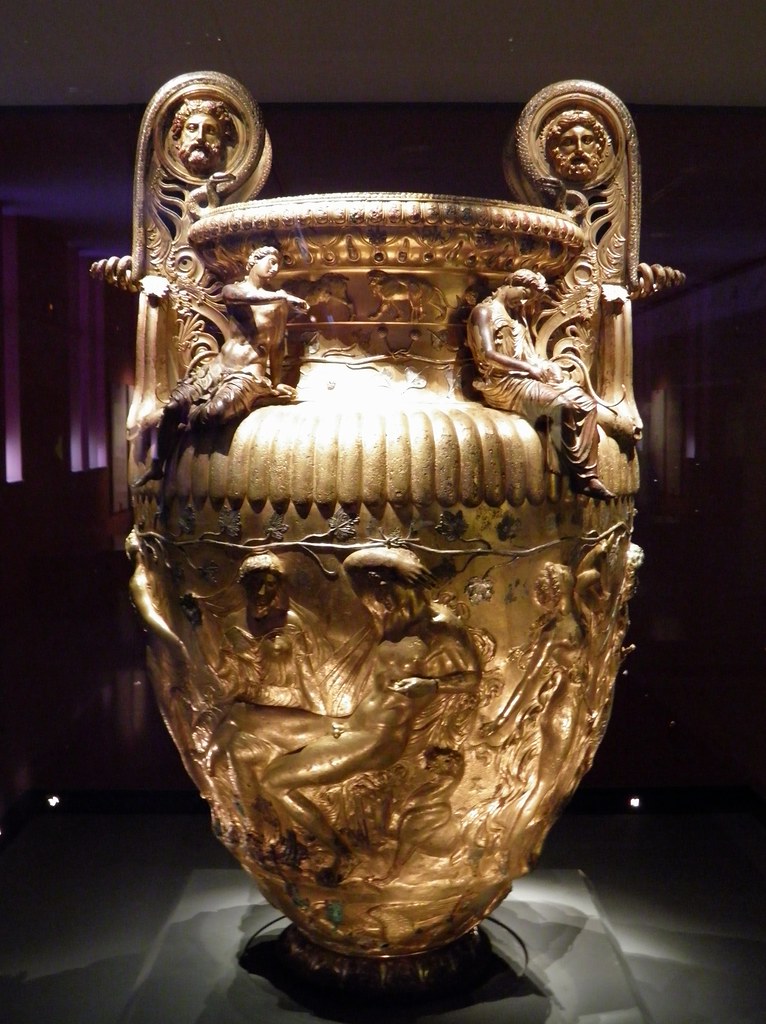

Marazov connected the interpretation of the compositions to the cult of the Kabeiroi and Theoi Megaloi of Samothrace and the origin of the vase in question depends on it as well. in his opinion the pitcher-rhyton from Borovo has been produced in one of the colonies of Miletus ca. The scene as a whole, as well as the treasure, he associates with the cult of the Thracian goddess Kotys 5.

He accepts the interpretation of the Dionysos setting, but identifies the central group of characters of the lower row (left to right) as – Musaios, Ariadne, Euanthos, Silenos and Maron 4. Dörig presented a fascinating explanation of the scene. The main scene depicts the sacred marriage of Dionysos and ariadne and the characters around as well as their attributes add to the performance of the ritual.

Comparison of the characters, both individually and by groups, with monuments of the Classical and Hellenistic times leads, according to many scholars, to the interpretation of the two friezes as related to the Dionysos circle. Different opinions on the iconography and semantics have been presented and it is obvious that the interpretations predetermine in high degree the supposed origin, date, function and affiliation of the treasure as a whole. The pitcher-rhyton with its rare shape and sophisticated multifigured two row composition on the body presents a challenge to the connoisseurs (Fig. Each of the five vases is a genuine masterpiece of the metalwork bearing invaluable information on the art and the religion of the Thracians and their neighbours. Extensive literature on the subject is accumulated at present 2. Since its first publication in 1975 1 the set is a subject of permanent scientific interest of Bulgarian and foreign experts.

With its extraordinary completion of the shapes, relief-and chiselled decoration of the vases the Borovo silver treasure stands out among the nicest toreutics' pieces discovered in Thrace.


 0 kommentar(er)
0 kommentar(er)
